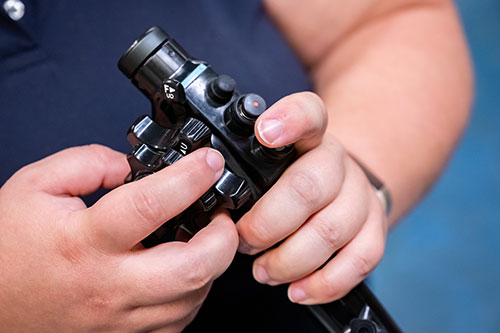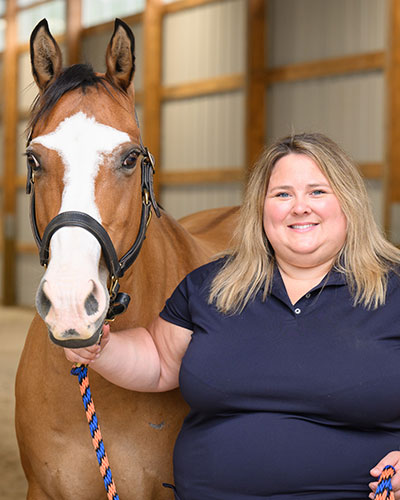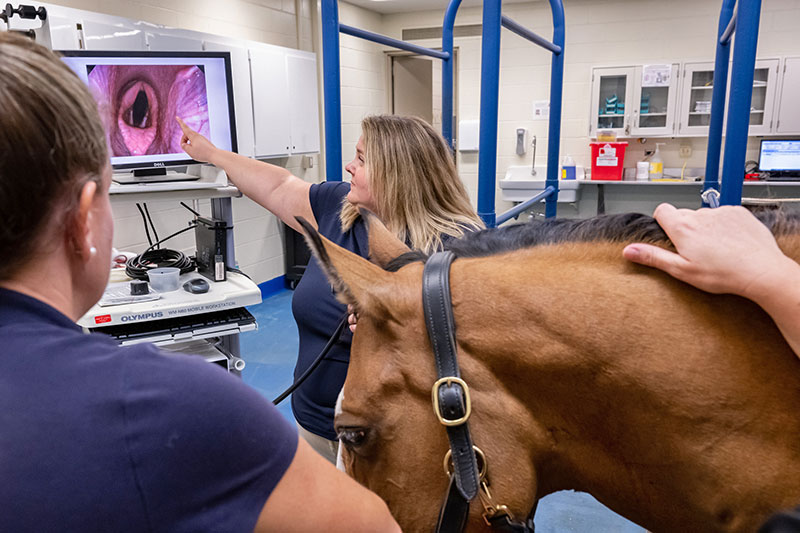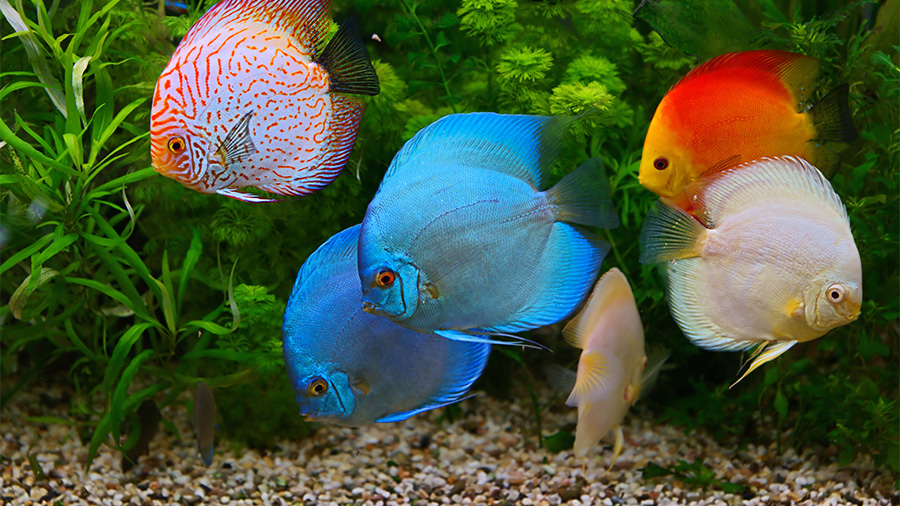Whether your horse is a racing Thoroughbred, a backyard pleasure horse, or something in between, they need functioning airways to do what we ask of them. So, what happens when horses make a strange sound when they breathe? Or when they cannot exercise because of breathing problems?
Dr. Sarah Gray, a boarded equine surgeon at the University of Illinois Veterinary Teaching Hospital in Urbana, shares her expertise on equine respiratory cases.
Take a Look Inside

“Regardless of the symptoms of the horse, evaluation by a veterinarian is definitely recommended. And, if the horse is distressed, the sooner the better,” Dr. Gray advises. “Respiratory sounds you can hear without a stethoscope usually indicate an issue in the upper airway, and endoscopy is a common first step in these cases to be able to evaluate the horse.”
During an endoscopic exam, a flexible camera is passed up the nose to the throat latch area. As the camera is passed through, the veterinarian can evaluate the nasal passages, vocal cords, and structures that make up the larynx (where the nasal cavity meets the trachea) and pharynx (where the mouth meets the esophagus). These structures are often evaluated together since they are very closely associated and must coordinate with each other.
Athlete or Respiratory Distress?
There are two populations of horses that come in for evaluation of upper airway noise: athletic horses that are making noise while exercising and horses that are making noise while breathing but are in respiratory distress. The more common of the two are the athletic horses that are making noises while intensely exercising or performing poorly. For these patients, Dr. Gray says an endoscopic exam is best done without sedation, if possible, so the normal movement of these structures can be observed.
For the athletic horses that come in with audible respiratory sounds, many of these horses have an anatomic abnormality causing the noise, according to Dr. Gray. The focus on those horses is correcting the anatomic abnormality to get the athlete back to peak performance. While any horse can have a variety of upper airway abnormalities, Standardbred racehorses often have a condition called an intermittently dorsally displaced soft palate.
Displaced Soft Palate
In a horse with a displaced soft palate, the epiglottis, which normally lies on top of the soft palate, becomes displaced below the palate. When this happens as the horse is exercising, it creates a partial obstruction as the horse breathes out and causes the palate to billow upward in front of the opening of the trachea. The sound we hear is produced by the soft palate vibrating when the horse exhales. While tongue ties and specialized tack can help with symptoms, surgical intervention may be needed and can return the athlete to full function, according to Dr. Gray.
Laryngeal Hemiplegia
Other horses such as racing Thoroughbreds or Warmblood sport horses are more commonly diagnosed with laryngeal hemiplegia. Horses with laryngeal hemiplegia have a delayed or paralyzed arytenoid.
The arytenoids are structures made of cartilage that form part of the larynx. Along with the epiglottis, the arytenoids help to close the airway to food and water. An arytenoid on each side of the larynx come together similar to sliding doors. The epiglottis then covers the arytenoids.

“In exercising horses, the arytenoids open to allow maximal airflow through the trachea,” says Dr. Gray. “If one side doesn’t open fully, the horse doesn’t get as much oxygen and tires more rapidly. In addition, the vocal cord that sits below the affected arytenoid vibrates and produces the roaring noise often associated with this condition.”
There are a variety of surgical options to treat laryngeal hemiplegia, depending on the degree of paralysis, the age of the horse, and the job of the horse.
Infections Cause Respiratory Distress
For the patients who come in with respiratory distress, which is far less common, the noises heard in these cases are often because the horse isn’t able to draw enough air into their airway. The focus in this group of patients is on relieving the stress of the patient by establishing adequate air flow. This may require an emergency tube be placed into the trachea, which allows air to bypass the upper airway and allows the horse to breath comfortably. The two most common reasons horses develop respiratory distress are related to infection.
“Strangles,” an infection caused by the bacterium Streptococcus equi, can result in an abscess in the lymph nodes of the neck. As the abscess gets larger, it puts pressure on and compresses the airway of the horse.
Another potential infection is known as arytenoid chondritis. In arytenoid chondritis, the cartilage becomes infected and swells, so the arytenoids cannot open which results in a narrowed airway and reduces the amount of air reaching the lungs with each breath. For both of these conditions, bypassing the airway allows time to treat the infection and allow the horse to potentially regain its normal airway.
Seek Help for Abnormal Respiratory Sounds
Unfortunately, there is not really a way for owners to prevent their horses from developing these conditions. “Since it is often an anatomic problem, there is no way to prevent it. However, we have many treatments available for upper airway conditions,” says Dr. Gray.
The best thing owners can do is be vigilant and have your horse evaluated if it’s making any noise as early treatment is generally more successful. Your veterinarian can help guide you as to the right course of treatment and if surgery is needed for your horse.
By Alaina Lamp
Photos by Fred Zwicky




